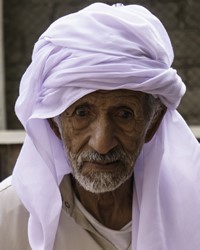Berber, Ouargla in Algeria

Photo Source:
Dan Sloan - Flickr
Creative Commons
|
Send Joshua Project a map of this people group.
|
| People Name: | Berber, Ouargla |
| Country: | Algeria |
| 10/40 Window: | Yes |
| Population: | 24,000 |
| World Population: | 24,000 |
| Primary Language: | Tagargrent |
| Primary Religion: | Islam |
| Christian Adherents: | 0.05 % |
| Evangelicals: | 0.02 % |
| Scripture: | Translation Started |
| Ministry Resources: | No |
| Jesus Film: | No |
| Audio Recordings: | No |
| People Cluster: | Berber-Saharan |
| Affinity Bloc: | Arab World |
| Progress Level: |
|
Introduction / History
Berber tribes stretch from the Siwa Oasis in Egypt to the Atlantic Ocean. They probably once inhabited the entire North African territory, forcing the black population to move further southward through the desert. However, the exact origins of the Berbers and how they arrived in North Africa remains a mystery.
The name "Berber" is derived from the Latin word barbari, meaning "barbarians." This term was used by the Romans in the third century A.D. to describe the "people of the Maghrib." (The Maghrib refers to the regions of North Africa that were conquered by Muslims between 670 and 700 A.D. It included Morocco, Algeria, Tunisia and the western portion of Libya. Although the Maghrib has been, for the most part, "Arabized" by language and Islamic culture over the centuries, there are still groups of Berbers, like the nine Saharan Berber tribes, who have retained much of their original Berber traditions and characteristics. The Ouargla are one of these Saharan Berber tribes.
Their various Berber languages belong to the Hamito-Semitic language family which includes five major groupings as well as many dialects. Although the Berber languages differ greatly from one another in sound, they only vary slightly in grammar and vocabulary. The Ouargla Berbers speak Tagargrent. They are mainly located in the oasis town of Ouargla.
What Are Their Lives Like?
Since the Sahara Desert is a harsh environment, most of the Saharan tribes occupy several oases. While there are many similarities between the various Berber groups, their lifestyles and quality of life vary according to the region in which they live. Ouargla is blessed with abundant resources, especially petroleum. For that reason, the Ouargla people are able to enjoy a higher standard of living than other Berber peoples. There are museums and a university in Ouargla where students can learn mathematics and engineering. This town is a center for trade, so Algerians have made sure there are adequate roads and even an airport.
What Are Their Beliefs?
Most Berber groups, including the Ouargla, are nominally Muslim. Their observances of Islamic law are lax.
The concept of baraka, or holiness, is highly developed in North Africa. The Ouargla Berbers believe that many people are endowed with baraka, of which the holiest are the shurifa, or the direct descendants of Mohammed. Another class of holy people is known as the marabouts. They are believed to possess, even after death, the powers of protection and healing.
In view of the general acceptance of Islam, it is particularly interesting that almost all Berbers prefer monogamous marriages.
What Are Their Needs?
Despite their relative economic wealth, the Ouargla Berber people are spiritually poor. Only a handful are Christ followers and there are few if any Christian resources in their Tagargrent language.
Prayer Points
Ask the Lord to call people who are willing to go to North Africa and share Christ with the Ouargla Berbers in Algeria.
Pray that God will raise up loving African Christians to reach out to their Berber neighbors.
Pray that God will raise up faithful intercessors who will stand in the gap for the Ouargla Berbers.
Ask the Lord to raise up those who will disciple Algerian Berbers to disciple others in the ways of Jesus Christ.